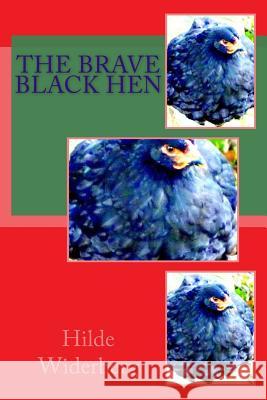The brave black hen » książka
The brave black hen
ISBN-13: 9781495365331 / Angielski / Miękka / 2014 / 26 str.
This is an easy-reading drama about a little hen, a rooster, a duck, a goose and a fox. Tales were told or enacted dramatically, rather than written down, and handed down from generation to generation. Because of this, the history of their development is necessarily obscure. and fairy tales appear, now and again, in written literature throughout literate cultures, as in The Golden Ass, which includes Cupid and Psyche (Roman, 100-200 AD), or the Panchatantra (India 3rd century BCE), but it is unknown to what extent these reflect the actual folk tales even of their own time. The stylistic evidence indicates that these, and many later collections, reworked folk tales into literary forms. What they do show is that the fairy tale has ancient roots, older than the Arabian Nights collection of magical tales (compiled circa 1500 AD), such as Vikram and the Vampire, and Bel and the Dragon. Besides such collections and individual tales, in China, Taoist philosophers such as Liezi and Zhuangzi recounted fairy tales in their philosophical works. In the broader definition of the genre, the first famous Western fairy tales are those of Aesop (6th century BC) in ancient Greece. The fairy tale itself became popular among the precieuses of upper-class France (1690-1710), and among the tales told in that time were the ones of La Fontaine and the Contes of Charles Perrault (1697), who fixed the forms of Sleeping Beauty and Cinderella. Although Straparola's, Basile's and Perrault's collections contain the oldest known forms of various fairy tales, on the stylistic evidence, all the writers rewrote the tales for literary effect. In the mid-17th century, a vogue for magical tales emerged among the intellectuals who frequented the salons of Paris. These salons were regular gatherings hosted by prominent aristocratic women, where women and men could gather together to discuss the issues of the day. In the 1630s, apathetic women began to gather in their own living rooms, salons, in order to discuss the topics of their choice: arts and letters, politics, and social matters of immediate concern to the women of their class: marriage, love, financial and physical independence, and access to education. This was a time when women were barred from receiving a formal education. Some of the most gifted women writers of the period came out of these early salons (such as Madeleine de Scudery and Madame de Lafayette), which encouraged women's independence and pushed against the gender barriers that defined their lives. The salonnieres argued particularly for love and intellectual compatibility between the sexes, opposing the system of arranged marriages. Sometime in the middle of the 17th century, a passion for the conversational parlour game based on the plots of old folk tales swept through the salons. Each salonniere was called upon to retell an old tale or rework an old theme, spinning clever new stories that not only showcased verbal agility and imagination, but also slyly commented on the conditions of aristocratic life. Great emphasis was placed on a mode of delivery that seemed natural and spontaneous The decorative language of the fairy tales served an important function . . . disguising the rebellious subtext of the stories and sliding them past the court censors. Critiques of court life (and even of the king) were embedded in extravagant tales and in dark, sharply dystopian ones. Not surprisingly, the tales by women often featured young (but clever) aristocratic girls whose lives were controlled by the arbitrary whims of fathers, kings, and elderly wicked fairies . . . as well as tales in which groups of wise fairies (i.e., intelligent, independent women) stepped in and put all to rights."
Zawartość książki może nie spełniać oczekiwań – reklamacje nie obejmują treści, która mogła nie być redakcyjnie ani merytorycznie opracowana.











